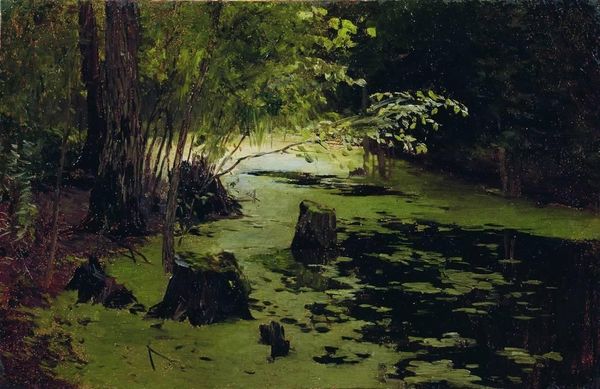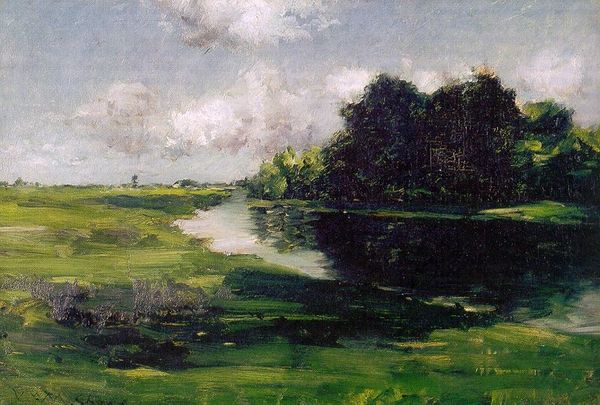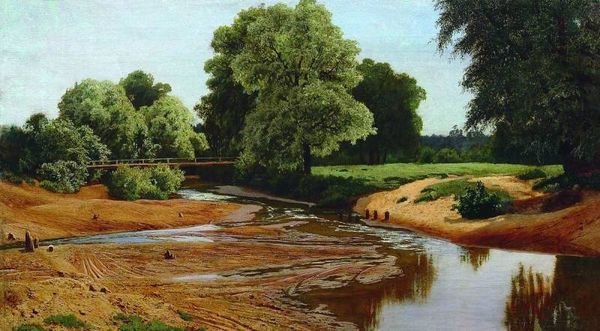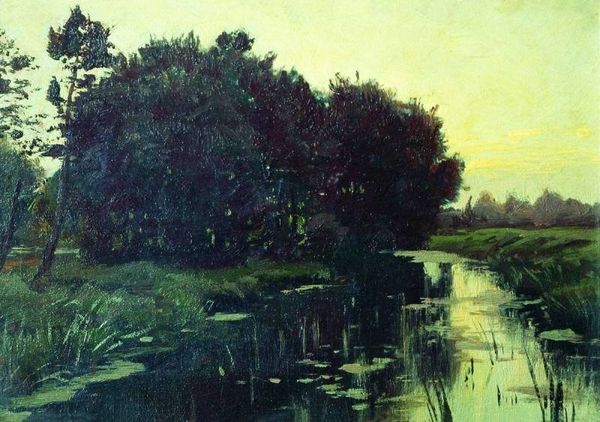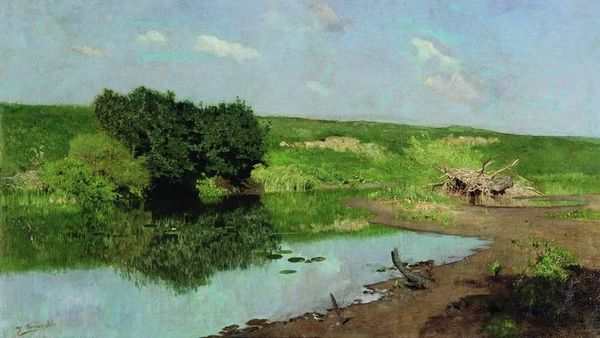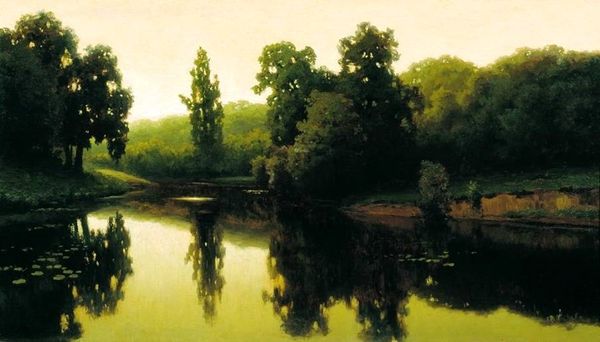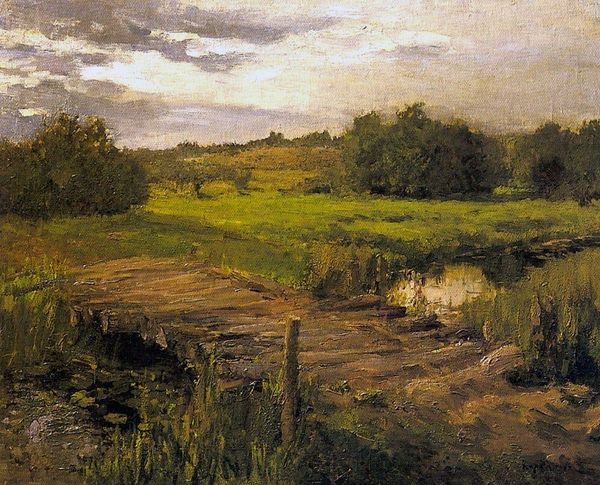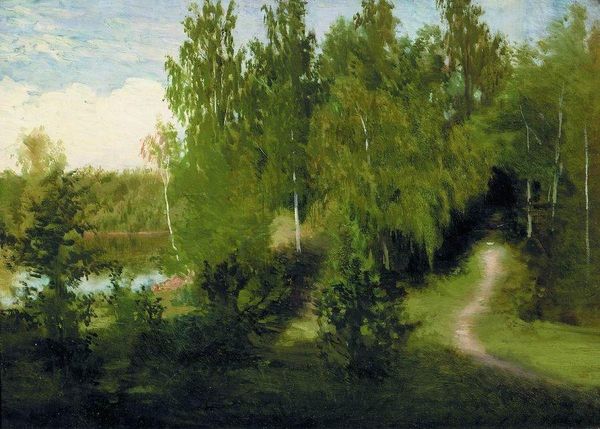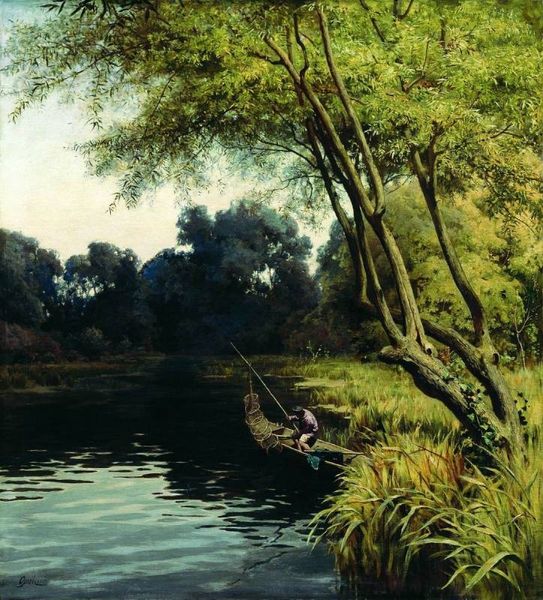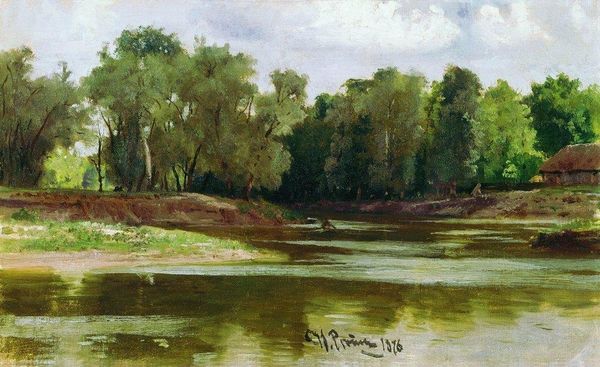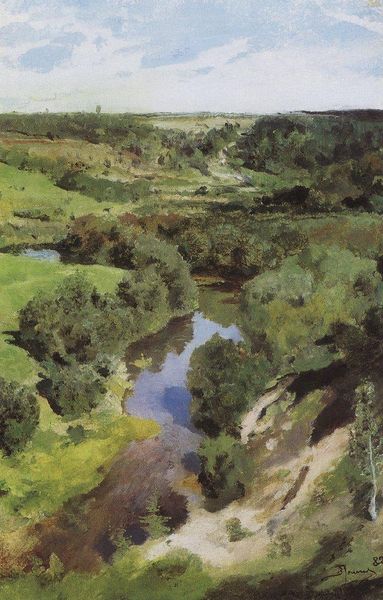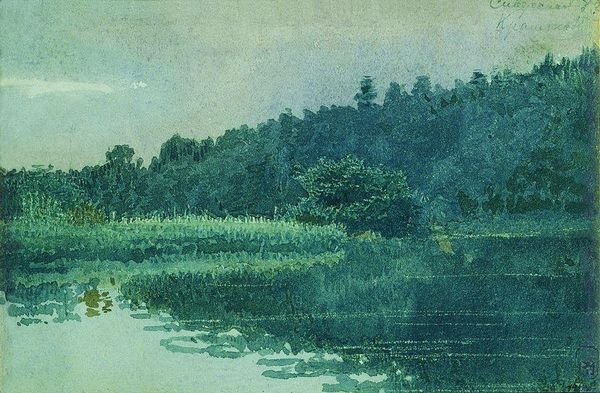
Copyright: Public domain
Curator: Here we have Volodymyr Orlovsky's "The landscape. The reeds in the river," painted in 1890 using oil on canvas. What are your initial thoughts? Editor: It strikes me as both serene and melancholic. The predominance of green, especially that almost luminous green of the water, hints at life, but also, perhaps, stagnation. It feels isolated. Curator: Interesting. That interplay of life and stagnation is central. Think about landscape painting of the late 19th century. It was a time when rural spaces were undergoing rapid transformation due to industrialization, causing widespread anxieties. Paintings like this weren't just pretty pictures; they represented a longing for a simpler, perhaps idealized, past. There’s a potent narrative of loss woven into seemingly idyllic scenes. Editor: Yes, and those reeds... they're like ancient symbols of nature's enduring power, always swaying, always present, despite the changes around them. But consider the formal qualities. See how Orlovsky uses vertical lines of the reeds against the horizontal stretch of the land? To me, that evokes a sense of balance, and continuity that bridges nature and perhaps humanity too. The cultural memory inherent in the imagery suggests resilience. Curator: Precisely! We should consider that in Tsarist Russia, anxieties around class and access to resources often played out in depictions of the land. The peasant, tied to the soil, becomes a loaded image. Now consider the single white shape, seemingly a water bird near the mid-ground, bisecting dark mass on the left and setting forth a point for vision... Editor: That touch of white also alludes to spiritual freedom and hope, even when mired in muddy greens. I wonder, too, about the fence. Is it a division, or does it point to some domesticity that the human inhabits this place? Is that form only meant to set out the scene by providing a receding horizon? Curator: It certainly invites that kind of speculation! And maybe it reveals both, the imposed structure against the free flow of nature. Ultimately, Orlovsky's romantic realist rendering reveals a complex perspective on shifting power dynamics, both socially and in nature itself. Editor: Seeing it in that light has changed my reading of the piece. It's much more than just a pretty scene. Thank you for offering such interesting ways to dive deeper into Orlovsky's landscape.
Comments
No comments
Be the first to comment and join the conversation on the ultimate creative platform.
